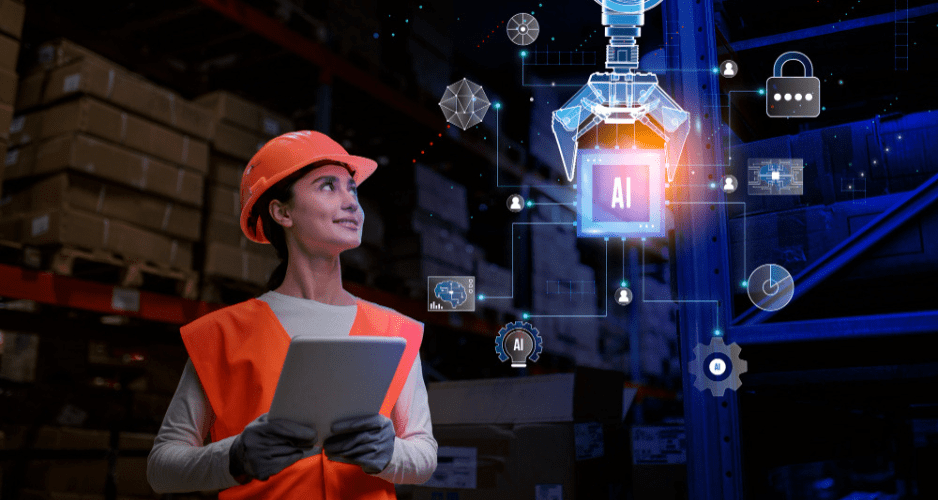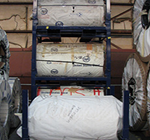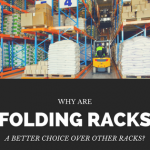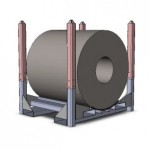Integration of IoT Technology in Industrial Storage Systems
In today's rapidly evolving landscape of industries and supply chains, the role of efficient industrial storage systems cannot be overstated. These systems form the backbone of various sectors, ensuring the seamless movement and management of goods, materials and resources. However, as the demands of modern commerce continue to escalate, the need for innovative solutions becomes paramount. This is where the Internet of Things (IoT) steps in, offering a transformative potential that promises to redefine the way we perceive and optimize industrial storage.
In today’s rapidly evolving landscape of industries and supply chains, the role of efficient industrial storage systems cannot be overstated. These systems form the backbone of various sectors, ensuring the seamless movement and management of goods, materials and resources. However, as the demands of modern commerce continue to escalate, the need for innovative solutions becomes paramount. This is where the Internet of Things (IoT) steps in, offering a transformative potential that promises to redefine the way we perceive and optimize industrial storage.

By harnessing the power of IoT technology, industrial storage systems stand poised to undergo a remarkable evolution, revolutionizing processes, enhancing decision-making and elevating efficiency to unprecedented levels. In this exploration, we delve into the profound synergy between industrial storage systems and IoT, uncovering the remarkable benefits and challenges that lie on this promising horizon.
Industrial Storage Systems and Their Components
Industrial storage systems refer to methods, equipment and strategies used to efficiently manage and store goods within various industries. They play a crucial role in supply chains and logistics by ensuring organized storage and timely retrieval of products. These systems directly impact factors like inventory management, order fulfillment and overall operational efficiency.
At the heart of industrial storage systems are several key components that work together to create efficient storage solutions. Two primary components within these systems are racks and pallets:
Racks: Racks are structures designed to hold and organize goods within a storage facility. They come in various forms, such as selective racks, drive-in racks and cantilever racks. The primary purpose of racks is to maximize vertical space and optimize storage capacity. Racks allow goods to be stored in a vertical arrangement, reducing the need for excessive floor space while keeping items easily accessible. Racks are often adjustable, enabling businesses to adapt storage configurations based on their needs.
Pallets: Pallets are flat platforms typically made of wood, plastic, or metal, designed to support and transport goods. They serve as the foundation for efficient material handling and storage. Pallets provide a standardized and uniform base on which goods can be stacked, making it easier for forklifts, pallet jacks and other equipment to move and transport them. The use of pallets minimizes manual handling, reduces the risk of damage to goods and speeds up the loading and unloading processes.
Common Challenges Faced by Industrial Storage Systems
Inventory Management: Effective inventory management stands as a cornerstone of successful industrial storage systems. However, it is often accompanied by challenges such as inaccurate demand forecasting, overstocking, or stockouts. Traditional methods of tracking inventory manually or through outdated systems can result in errors and inconsistencies, further complicating the management process.
Optimization: Optimizing storage space is a puzzle that industries constantly strive to solve. The challenge lies in efficiently utilizing available space to accommodate varying types of products while minimizing the time and effort required for retrieval. As industries expand and products diversify, finding the ideal storage layout becomes increasingly complex.
Real-Time Tracking: Real-time tracking of goods within industrial storage systems is crucial for ensuring timely deliveries, reducing loss and maintaining accurate inventory levels. Conventional tracking methods might rely on manual updates or periodic scans, leading to delays in obtaining accurate information. In an era of rapid data-driven decision-making, the lack of instant visibility into inventory movement can hinder efficiency and responsiveness.
Space Utilization and Scalability: As businesses grow or change, the ability to scale up or adapt storage systems becomes vital. Striking a balance between utilizing current space optimally and planning for future expansion can be a challenge. Constrained by existing layouts, some industries might find it challenging to accommodate increased volumes of products or handle sudden changes in demand without disrupting operations.
Maintenance and Downtime: Industrial storage systems, especially those relying on automated processes, are susceptible to mechanical failures or technical glitches. Ensuring regular maintenance and promptly addressing issues is essential to prevent unexpected downtime, which can disrupt operations and lead to delays in fulfilling orders.
Unveiling IoT Technology
The Internet of Things (IoT) is a groundbreaking technological paradigm that connects physical objects to the digital world, enabling them to communicate, share data and perform tasks autonomously. At the heart of IoT lies a network of interconnected devices and sensors that collaborate to collect, transmit and process data. These devices span a wide spectrum, from everyday objects like thermostats and wearable devices to complex industrial machinery.
Sensors: Sensors are the sensory organs of IoT. They gather information from the physical environment, such as temperature, humidity, motion and more. These sensors vary in complexity and can range from simple on-off switches to sophisticated devices capable of detecting multiple environmental parameters.
Data Collection: The data collected by sensors holds the key to understanding the environment and making informed decisions. This data can include real-time measurements, status updates and even images or video feeds. The challenge lies in efficiently gathering and transmitting this data to a central point for processing.
Connectivity: The ability of IoT devices to communicate with each other and with central systems is facilitated by various connectivity options. These include Wi-Fi, cellular networks, Bluetooth and emerging technologies like LoRaWAN.
Data Analysis: The sheer volume of data generated by IoT devices is immense. Effective data analysis involves extracting meaningful insights from this data to drive decision-making. Machine learning algorithms and predictive analytics play a crucial role in identifying patterns, trends, and anomalies within the data.
How IoT Can Transform Industrial Storage Systems
IoT’s integration into industrial storage systems heralds a new era of efficiency and intelligence. Through its capabilities, IoT has the potential to revolutionize the way these systems operate and provide a host of transformative benefits.
Real-Time Monitoring: IoT enables constant, real-time monitoring of inventory, assets and environmental conditions. Sensors can track variables like temperature, humidity and storage status, ensuring that goods are stored optimally and conditions are maintained within acceptable ranges.
Predictive Maintenance: By analyzing data trends, IoT devices can predict maintenance needs before breakdowns occur. This proactive approach minimizes downtime, reduces operational disruptions, and prolongs the lifespan of equipment.
Data-Driven Insights: IoT-generated data offers a treasure trove of insights. Analyzing this data can lead to optimized inventory management, demand forecasting, and resource allocation. It empowers decision-makers with actionable intelligence, enhancing overall efficiency.
In the context of industrial storage systems, IoT’s transformative power lies in its ability to provide real-time visibility, optimize operations, and empower businesses with data-driven strategies. The combination of sensors, data analysis, and connectivity creates a synergy that not only addresses existing challenges but also unlocks new opportunities for growth and innovation.
Future Trends in IoT and Industrial Storage
As IoT technology continues to evolve, its impact on industrial storage systems is poised to undergo transformative changes. Emerging trends within the realm of IoT are set to shape the future of how businesses manage and optimize their storage solutions. Several trends hold the potential to redefine industrial storage systems:
AI-Assisted Analytics: The integration of Artificial Intelligence (AI) with IoT technology promises to elevate industrial storage systems to new heights. AI-driven analytics can process vast amounts of data collected by IoT sensors and devices. By employing machine learning algorithms, AI can uncover intricate patterns, trends and insights from the data.
Edge Computing: Edge computing involves processing data closer to its source, reducing latency and enhancing real-time decision-making. In the context of industrial storage systems, this means that data collected by IoT devices within warehouses or storage facilities can be processed locally, allowing for quicker responses to changing conditions.
Enhanced Connectivity (5G): The rollout of 5G networks promises to unlock a new level of connectivity and communication capabilities for IoT devices. This ultra-fast and low-latency network technology will enable real-time data transfer between devices and systems. For industrial storage systems, this means that IoT-enabled devices can communicate seamlessly, facilitating swift information exchange between sensors and central management systems.
Predictive Maintenance Refinement: While predictive maintenance is already a trend in IoT integration, its refinement and optimization are expected to become even more precise. Advancements in sensor technology and data analytics will allow for more accurate prediction of equipment failures. This will minimize downtime, reduce maintenance costs and further enhance the reliability of industrial storage systems.
As industries continue to evolve, exploring tailored IoT solutions becomes imperative. Each sector’s unique challenges and requirements can be addressed through customized implementations of IoT technology. It’s essential to acknowledge the challenges associated with integration, including data security and system complexity, while keeping an eye on the remarkable benefits that lie on the horizon. The future of industrial storage is undoubtedly connected, data-driven and IoT-driven, opening up a realm of possibilities for those willing to embrace its transformative potential.
About The Author










